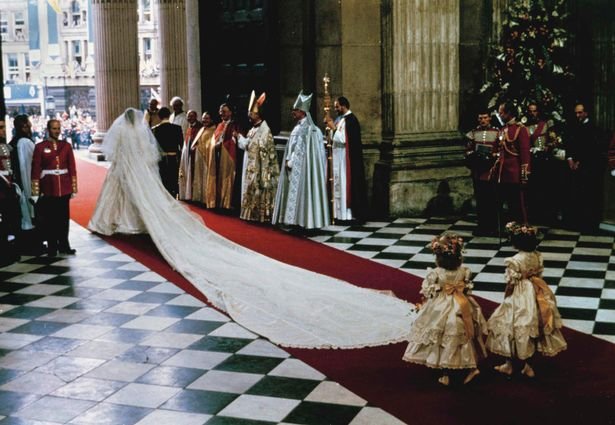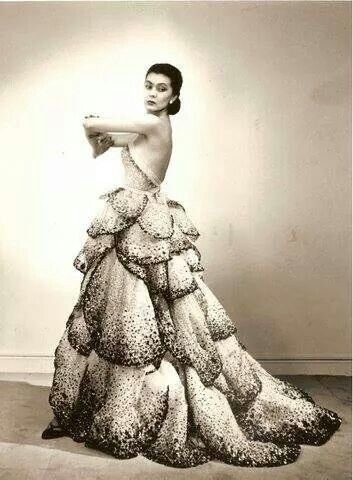The (Pre)History of Fashion
Despite popular belief, humans have been dressing for fashion for the majority of their existence. Though we picture cavemen and prehistoric peoples as individuals enslaved to basic survival, ancient cultures were filled with decorative accessories, complex patterns, and fashion workers who made the trendy hunter-gatherers possible.
The first known types of humans to make clothing were the Neanderthals. Archaeologists have found ancient scrapers and tools to cut and shape hide, dating to roughly 100,000 BCE. Based on these tools, they likely cut holes into hide for arms, legs, and the head. From fossilized rock, there have been patterns found of what appears to be belts to make a more fitted silhouette either for warmth, mobility, or fashion.
The Cro-Magnon man, the earliest form of modern humans, was next to advance the fashion industry. This culture invented tools like sharp awls that were used to punch small holes, allowing for leather and skins to be laced together for more tailored fits and sewing patterns to emerge. Most importantly, they invented the first version of the needle from slivers of animal bones sharpened to a point on one end and having an eye hole on the other end dating to around 40,000 BCE
A few thousand years later, it is shown that these people began to dye flax fibers around 36,000 BC, evidenced from preserved woven material in a prehistoric cave in the Republic of Georgia.
Accessories also came into play around this time in the Gravettian culture, Upper Paleolithic culture in Europe dating about 28,000–19,000 years ago. One of the earliest examples of art, the Venus of Willendorf, is one of dozens of statues thought to be a fertility cult of worship dating back to 30-25,000 BCE. The majority of these have a type of stylized head, either fashioned hair or knitted hat. The Venus of Brassempouy more clearly has a net knit upon her head and is perceived as a headdress.
Another Gravettian find is the Prince, a burial of a young man found with hundreds of perforated shells and teeth all around his head and body. These decorations were made with tiny holes made to be sewn into clothing in rows. As a hunter, evidenced by his kit, likely he did not have the time nor skills to make such decorative clothing, suggesting a tailor as a type of job at this time.
Many of the most interesting and informative cases of ancient bodies is that of the bog people of Ireland. Human remains in peat bogs are nearly perfectly preserved from lack of oxygen within the peat bogs. Though we have found up to 6,000 years old in the bogs, the 3,000-year-old body of the Clonycavan Man is an interesting case as we find him with an eccentric hairstyle, shaved at front and incorporating imported hair gel from Spain. A possible companion to this man was a young man found with freshly manicured hands. Both were young and in their 20s and tall, one standing at 6’6, and tortured and murdered, leading archaeologists to speculate as to why so many fashion-forward bodies were in the bogs. Perhaps it was sacrifices, robbery, jealousy, coincidence, or some other ritual that remains lost to time.
In the vein of prehistoric murder victims, the oldest “who-dun-it” case also sports rich fashion. Otzi the iceman, who dates from about 5000 years ago, was found preserved in a block of ice. He was a hunter found with his kit of arrowheads and spears and was killed with an arrow to the back. He has the earliest example of tattoos, with tattooed lines all over his body. These were originally thought to indicate the number of kills he had made, but it was recently suggested that these were perhaps a form of healing hunting injuries, as they are all found in pressure points used in acupuncture.
Additionally, his clothing was well-preserved and featured: a leather belt; leather suspenders; leather leggings; a loincloth; shoes with straw for a soft tread; tailored hide coat; and a cape made of straw for insulation and waterproofing with a matching hat. The shoes are of particular interest to historians, as it is a complicated pattern of the shoe and shows that he did not make it and probably paid a cobbler or garment specialist.
While it is becoming more apparent in the mainstream consciousness that Neolithic people were far more advanced than we gave them credit for, the importance of fashion throughout all eras still remains underestimated. Through these finds, we are slowly coming to accept that fashion is something we have always prioritized as we as humans strive to look good.










